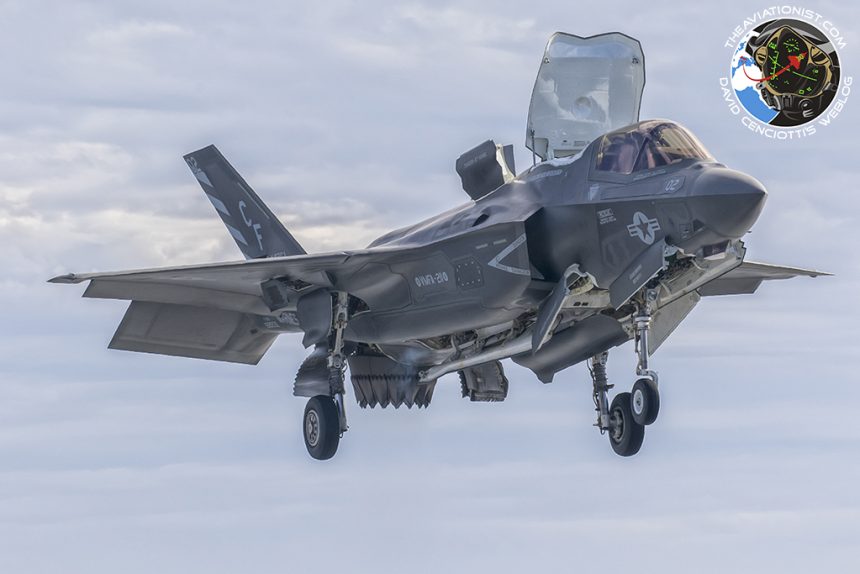We Visited the USS America with 12 F-35Bs on Board!
The rumble of the MV-22B reverberated off the flight deck of the USS America (LHA-6).
The 12 F-35Bs onboard represented more F-35s than had ever gathered at sea. The F-35B moving steadily towards deployment represents an unprecedented leap in capability, the future of formidable maritime power.
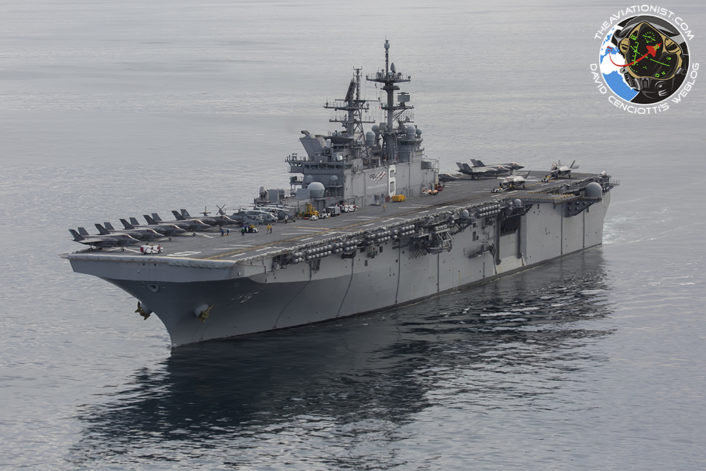
The gathering of assets was part of a joint US Navy (USN)/ US Marine Corps (USMC) “Proof of Concept” demonstration held off the coast of Southern California Nov. 18-20.
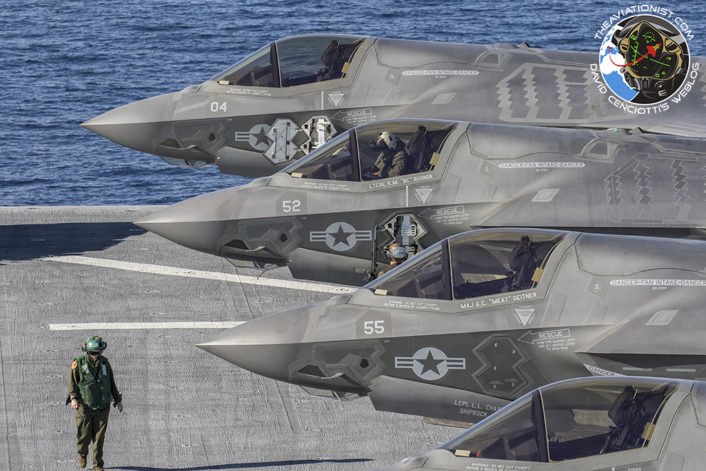
PAO Capt. Sarah Burns indicated that the demonstration would explore the best way to integrate a large package of F-35Bs into the current USN/USMC structure to bring the most effective power projection from the sea.
Lt. General Jon M. Davis, Deputy Commandant for Aviation shared a core value of the Marine Corps demonstrated onboard, “No Marine Corps platform fights alone.” The F-35B, MV-22B, AH-1Z and UH-1Y combined and integrated with the US Navy’s latest amphibious assault ship (USS America) complete a package that provides the Marine Air-Ground Task Force (MAGTF) with a broad spectrum of response options, and the most advanced mobile warfighting capability.
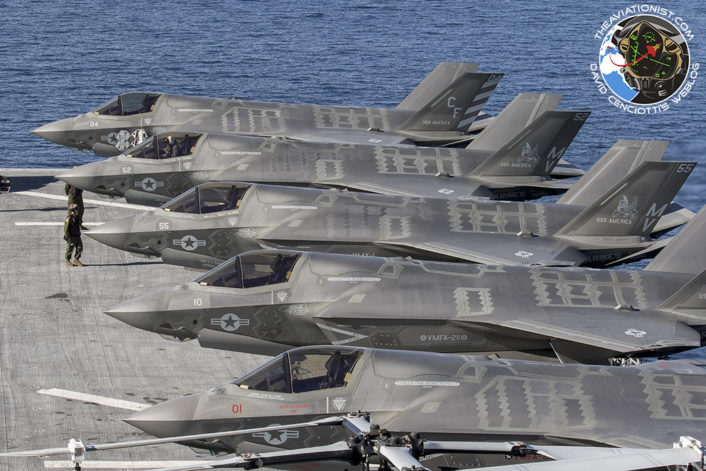
The MV-22B Ospreys speed and range have been a game changer for the USMC MAGTF, and now with the F-35B on hand the operational possibilities take yet another quantum leap. The sea based capability provides global mobility unrestrained by availability of land bases. This integrated USN/USMC capability is ideal for the fight against terrorism, and/or the insertion of Marine infantryman or special forces deep in hostile territory.
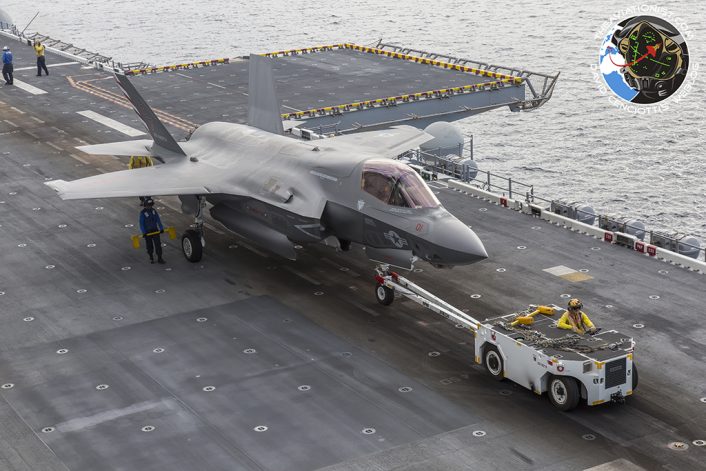
The access is increased even more given the platforms ability to quickly relocate to austere forward operating bases. Given the F-35Bs stealth, advanced sensors, situational awareness and weapons, it also provides the capability to operate in proximity of areas hosting Integrated Air Defense Systems (IADS) or Anti-Access/Area-Denial (A2/AD) environments.

The demonstrated integration of the F-35 and the US Navy’s AEGIS Ballistic Missile Defense System adds tremendous potency to an already capable system. The F-35 can provide over the horizon targeting data to a readily available USN AEGIS platform that can quickly intercept ballistic missile, drone, or hostile aircraft with its SM-6 missile (widely believed to have a range beyond 200 mile). This allows stealth detection of targets by the F-35, and a virtually unlimited (boatload) of missiles to utilize.

The F-35B replaces three Marine Corps aircraft, the F/A-18 Hornet, the EA-6B Prowler, and the AV-8B Harrier II. Not only does it do the job of each aircraft better, it adds Intelligence, Surveillance & Reconnaissance (ISR) and Command & Control (C2) capability. The F-35B fulfills the USMC vision of “every Marine Corps aircraft a sensor, a shooter and a sharer.”
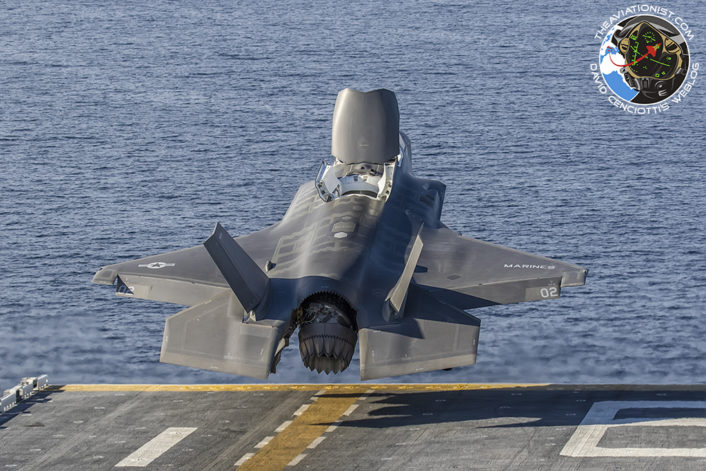
Once onboard the USS America the rumbling of the Osprey was quickly replaced by the near continuous roar of F-35Bs launching and landing. The tempo of operations demonstrated the F-35Bs readiness for deployment and combat activity. That should come as no surprise given the “B” has over 22,000 combined flight hours.
The F-35B advanced flight systems reduce pilot workload and increase safety in all aspects of flight. USMC pilot Lt. Col. Rich “VC” Rusnok an experienced AV-8B Harrier II pilot and slated to become the Commanding Officer (CO) of VFMA-121 in 2017 noted that, “hovering in the Harrier was like sitting on a one-legged bar stool.” His comment was complemented by USMC pilot Lt. Col. John “Guts” Price (slated to become the CO of VFMA-122 in 2018). Price noted that his first hover in a F-35B found him realize his learned instincts in the Harrier to provide inputs created problems in the hover, and it was better to ease off the controls and let the F-35B do as it wanted! Perhaps nowhere is this ease of flying more evident than in the speed of pilots Carrier Qualifications (CQs); in the previous 4 years only 8 USMC F-35B pilots had CQ’d, in the past 3 weeks 19 pilots CQ’d!
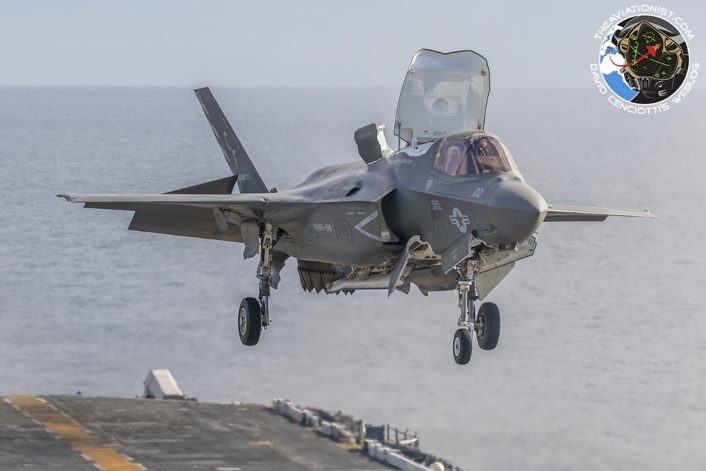
The Marine Corps lead the way with the F-35 program. The deployment of VMFA-121 the “Green Knights” to Japan is motion to take place in January 2017, with further deployments slated for 2018. It all speaks to the ongoing progress and maturity of the F-35 program. This “aerial amphibious assault force” represents a new era of flexibility and capability for the MAGTF, and I anticipate we’ll regularly see the USS America serving the nations interests in strategic locations around the globe.
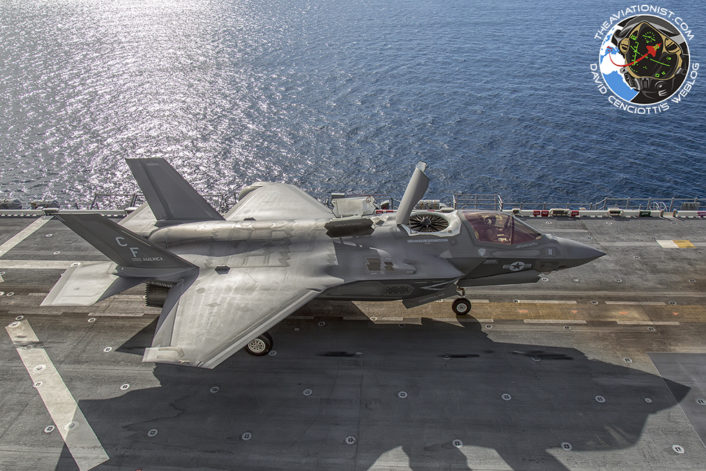
The Aviationist thanks Sylvia Pierson, and Brandi Schiff, JSF/JPO PA; Capt. Sarah Burns & 1st Lt. Maida Zheng, USMC PAOs; Captain Joseph R. Olson, Commanding Officer of the USS America and entire crew; Lt. General Jon M. Davis, USMC Deputy Commandant for Aviation; Supporting F-35B pilots of VMFA-211 & the F-35B and MV-22B pilots and personnel of VMX-1.
Related articles

